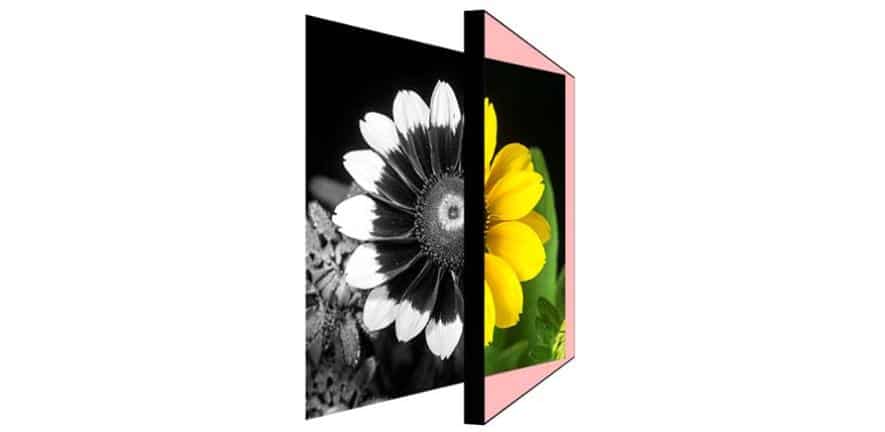By trapping light into tiny crevices of gold, researchers have coaxed molecules to convert invisible infrared into visible light, creating new low-cost detectors for sensing.
Detecting light beyond the visible red range of our eyes is hard to do, because infrared light carries so little energy compared to ambient heat at room temperature. This obscures infrared light unless specialised detectors are chilled to very low temperatures, which is both expensive and energy-intensive.
Now researchers led by the University of Cambridge have demonstrated a new concept in detecting infrared light, showing how to convert it into visible light, which is easily detected.
In collaboration with colleagues from the UK, Spain and Belgium, the team used a single layer of molecules to absorb the mid-infrared light inside their vibrating chemical bonds. These shaking molecules can donate their energy to visible light that they encounter, ‘upconverting’ it to emissions closer to the blue end of the spectrum, which can then be detected by modern visible-light cameras.
The results, reported in the journal Science, open up new low-cost ways to sense contaminants, track cancers, check gas mixtures, and remotely sense the outer universe.
The challenge faced by the researchers was to make sure the quaking molecules met the visible light quickly enough. “This meant we had to trap light really tightly around the molecules, by squeezing it into crevices surrounded by gold,” said first author Angelos Xomalis from Cambridge’s Cavendish Laboratory.
The researchers devised a way to sandwich single molecular layers between a mirror and tiny chunks of gold, only possible with ‘meta-materials’ that can twist and squeeze light into volumes a billion times smaller than a human hair.
“Trapping these different colours of light at the same time was hard, but we wanted to find a way that wouldn’t be expensive and could easily produce practical devices,” said co-author Dr Rohit Chikkaraddy from the Cavendish Laboratory, who devised the experiments based on his simulations of light in these building blocks.
“It’s like listening to slow-rippling earthquake waves by colliding them with a violin string to get a high whistle that’s easy to hear, and without breaking the violin,” said Professor Jeremy Baumberg of the NanoPhotonics Centre at Cambridge’s Cavendish Laboratory, who led the research.
The researchers emphasise that while it is early days, there are many ways to optimise the performance of these inexpensive molecular detectors, which then can access rich information in this window of the spectrum.
From astronomical observations of galactic structures to sensing human hormones or early signs of invasive cancers, many technologies can benefit from this new detector advance.
The research was conducted by a team from the University of Cambridge, KU Leuven, University College London (UCL), the Faraday Institution, and Universitat Politècnica de València.
The research is funded as part of a UK Engineering and Physical Sciences Research Council (EPSRC) investment in the Cambridge NanoPhotonics Centre, as well as the European Research Council (ERC), Trinity College Cambridge and KU Leuven.
Jeremy Baumberg is a Fellow of Jesus College, Cambridge.
Reference:
Angelos Xomalis et al. ‘Detecting mid-infrared light by molecular frequency upconversion with dual-wavelength hybrid nanoantennas’, Science (2021). DOI: 10.1126/science.abk2593
If our reporting has informed or inspired you, please consider making a donation. Every contribution, no matter the size, empowers us to continue delivering accurate, engaging, and trustworthy science and medical news. Independent journalism requires time, effort, and resources—your support ensures we can keep uncovering the stories that matter most to you.
Join us in making knowledge accessible and impactful. Thank you for standing with us!

